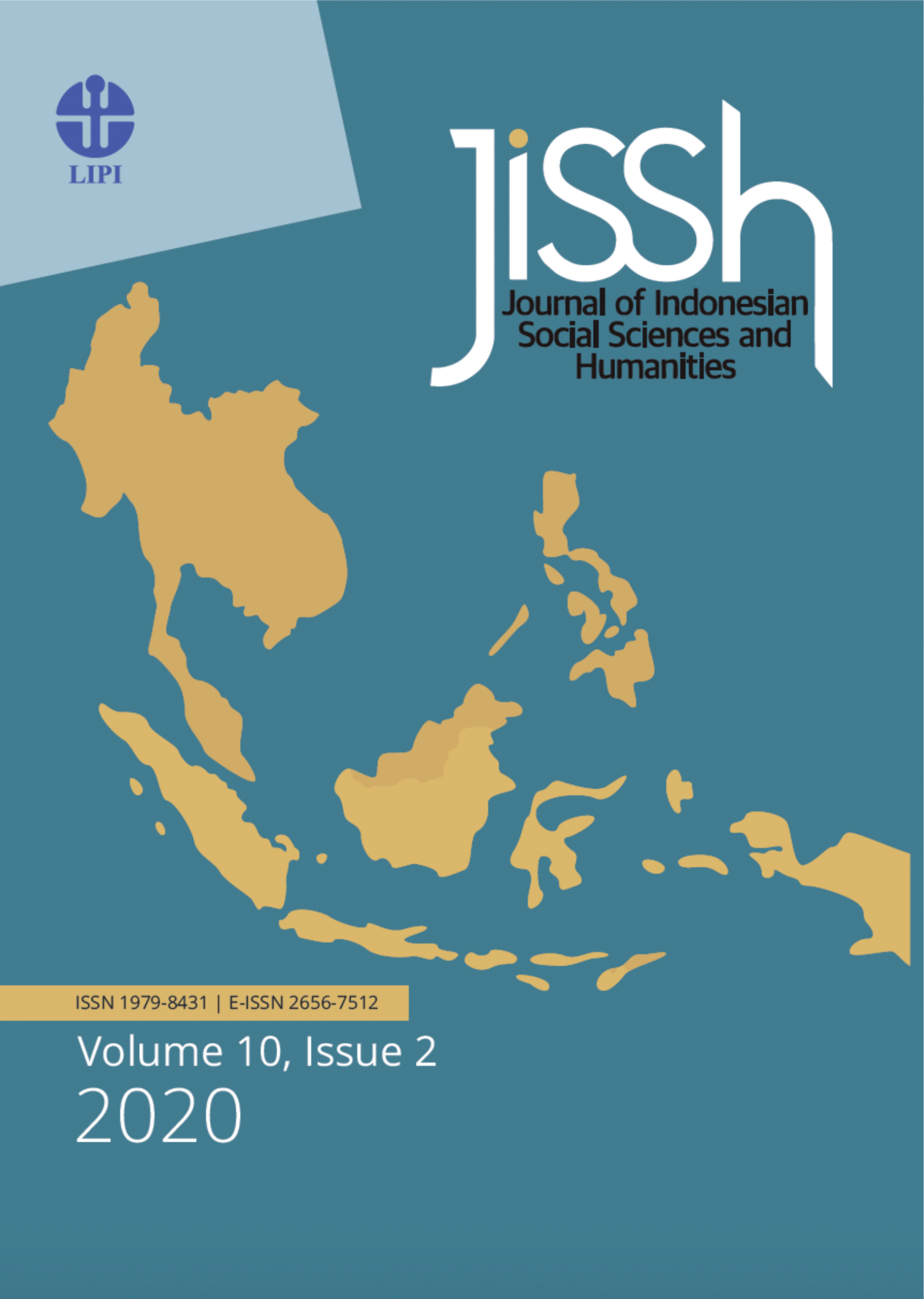The Phenomenon of Underage Motorbike Riders in Junior High School Students: A Critical Review of Juvenile Delinquency
Keywords:
juvenile, juvenile delinquency, parenting parents, motorbike underage usersAbstract
Motorbike use by students who are under the age of 17 years is an act of infringement. It is stated in Article 281 of Law Number 22 Year 2009 regarding Traffic and Road Transportation. Traffic violations is often done by junior high school students. User behavior motorbikes under the age is a form known as juvenile delinquency. In this study, researcher took samples at two schools namely SMPN 1 Bambanglipuro and SMPN 2 Sanden, Bantul, because Sanden is one of the areas in Yogyakarta that researcher saw a lot of students who ride the motorbike to go to school. To examine this phenomenon, researchers used quantitative research methods by taking 394 students as respondents. Associated with the phenomenon of motorbike users under age, this paper focuses on a form of parenting from their parents and motorbike users under age as the dependent variable and independent variables. In this study, the researcher used chi square test to look at the relationship between the independent variable and the dependent variable. This paper uses the concept of social control theory of Travis Hirschi (2007) to understand how such behavior could occur. Indeed the respondents knew what they were doing was a violation, but because of the environment that tends to allow these actions to make them feel safe. As the results obtained in this study, the high number of motorbike users in this study, due to several reasons, namely, less strict parents of children, lack of maintenance performed by local traffic police, and the lack of public attention to such behavior.
References
Andriyani. D. (2015). Hubungan antara konformitas pada teman sebaya dengan Implusive Buying produk Fashion pada remaja putri (Page 26).
Bappeda. (2020). Data Kecelakaan dan Pelanggaran Lalu Lintas-List Data Dasar. Aplikasi Dataku Daerah Istimewa Yogyakarta. Accessed at http://bappeda.jogjaprov.go.id/ dataku/data_dasar/index/548 data-kecelakaan-dan-pelanggaran-lalu-lintas?id_skpd=39#48
BPS. (2018). Perkembangan Jumlah Kendaraan Bermotor Menurut Jenis, 1949-2018 (Data Series). Jakarta: Badan Pusat Statistik. Accesed at https://www. bps.go.id/linkTableDinamis/view/id/1133.
Grashinta, A. & Wujud, L. A. (2018). Pengaruh Pola Asuh Orangtua dan Konformitas pada Teman Sebaya Terhadap Perilaku Keselamatan Berkendara Roda Dua Remaja di Jakarta. Jurnal PSYCHE 165 11(1), 27-36
Goode J, W. (1995). Sosiologi Keluarga.
Gunarsah, S. (2000). Psikologi Perkembangan. Harianjogja.com (2019, Maret 04). Lakalantas di DIY Paling Banyak Dialami Pengendara Usia Produktif. Jogjapolitan. https://jogjapolitan.harianjogja.com/read/2019/03/04/510/975726/-lakalantas-di-diy paling-banyak-dialami-pengendara-usia-produktif
Hamzah, I. (ed). (2020). Psikologi Klinis dalam Konteks Pemasyarakatan. Solok: Insan Cendekia Mandiri
Kartono, K. (1998). Kenakalan Remaja.
Khusna, Nisa’ul and Winih Budiarti. (2019). Kajian Delinkuensi Anak di Indonesia Tahun 2011-2015. Jurnal Populasi Volume 27 Nomor 2 page 40-55.
Kominfo.go.id. (2017, Agustus 22). Rata-Rata Tiga Orang Meninggal Setiap Jam Akibat Kecelakaan Jalan. Artikel GPR. https://kominfo.go.id/index.php/content/detail/10368/rata-rata-tiga-orang-meninggal-setiap-jam-akibat-kecelakaan-jalan/0/artikel_gpr
Listyaningsih, U., Alfana, M.A.F., Pujihastuti, P., & Amrullah, H. (2019). Pola Asuh Orang Tua pada Anak Usia 10-14 Tahun di Daerah IstimewaYogyakarta. Jurnal Populasi 27(2), 1-12
Myers, D. G. (2005). Social psychology. 8th ed. New York: McGraw-Hill Companies.
Pangesti, S.D., & Tianingrum, N.A. (2019). Hubungan Pola Asuh Orang Tua dengan Kenakalan Remaja Sekolah di Wilayah Kerja Puskesmas Harapan Baru. BSR (Borneo Student Research)
Pramesti, T. J. A. (2016). Sanksi Bagi Pelajar yang Berkendara Tanpa SIM. https://www.hukumonline.com/klinik/detail/ulasan/lt52809204e59ce/sanksi-bagi-pelajar-yang-berkendara-tanpa-sim
Purwanto, P. (2007). Sosiologi Untuk Pemula.
Utami, A.C.N., & Raharjo, T.S. (2019). Pola Asuh Orang Tua dan Kenakalan Remaja. Jurnal Pekerjaan Sosial 2(1),, 150-167.
Romli Atmasasmita, H. (2007). Teori dan Kapita Selekta Kriminologi.
Saputro, B.M., & Soeharto, T.N.E.D. (2012). Hubungan Antara Konformitas Terhadap Teman Sebaya dengan Kecenderungan Kenakalan Pada Remaja. 10(1), 10-15
Sofia, A. (2013). Hubungan antara pola asuh otoritatif orang tua dan konformitas teman sabaya dengan kecerdasan moral remaja (Page 54-55).
Sunaryanti, Sri Sayekti H. (2016). Relationship The Parenting Pattern And The Juvenile Delinquency At State Senior Secondary School 8 Surakarta. IJMS – Indonesian Journal On Medical Science, Vol 3, No 2.
Suryani, B. (2016). Kecelakaan Bantul: Belasan Anak Tewas di Jalanan Akibat Kecelakaan. Solopos. com. https://m.solopos.com/kecelakaan-bantul-belasan-anak-tewas-di-jalanan-akibat-kecelakaan-677950.
Tri, E. (2015). Hubungan Pola Asuh Orangtua dengan Gangguan Emosi dan Perilaku Remaja SMP Pasca Erupsi Merapi di Kecamatan Cangkringan. [Universitas Gadjah Mada]. http://etd.repository.ugm.ac.id/penelitian/detail/86544
Unayah, N., & Muslim, S. (2015). The Phenomenon of Juvenile Delinquency and Criminality. Jakarta: Puslitbang Kesejahteraan Sosial, Kemensos RI
Downloads
Published
Issue
Section
License

This work is licensed under a Creative Commons Attribution-ShareAlike 4.0 International License.
Authors who publish with this journal agree to the following terms:
1. Authors retain copyright and grant the journal right of first publication with the work simultaneously licensed under an Attribution-ShareAlike 4.0 International (CC BY-SA 4.0) license. This license allows others to remix, adapt, and build upon the work, as long as they credit the author and license their new creations under the same terms.
2. Authors may enter into separate, additional contractual arrangements for the non-exclusive distribution of the journal’s published version of the work (e.g., posting it to an institutional repository or including it in a book), provided there is an acknowledgment of its initial publication in this journal.
3. Authors are permitted and encouraged to post their work online (e.g., in institutional repositories or on their personal website) prior to and during the submission process, as this can lead to productive exchanges and increase citations of the published work (See The Effect of Open Access ).


















